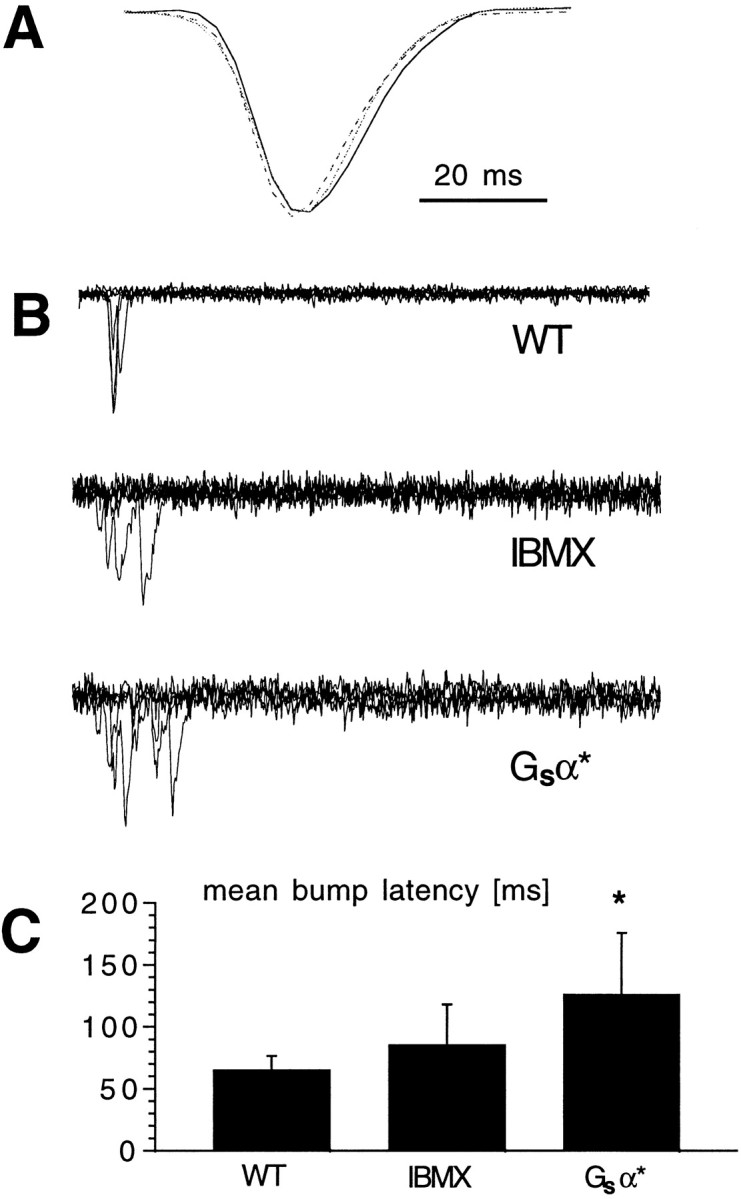Fig. 4.

Quantum bump latency but not bump shape or amplitude change with cAMP modulation. A, Representative quantum bumps recorded in wild-type photoreceptors in the absence (WT; solid line) and presence (dotted line) of 100 μm IBMX and in Gsα* photoreceptors (broken line). Eachtrace is the average of at least 30 quantum bumps aligned by their rising phases and normalized, showing that their time courses are indistinguishable. Actual amplitudes were in the range of 10–12 pA and not statistically distinguishable (n= 4–5 cells for each condition). B, Quantum bumps elicited by brief (1 msec) flashes of light of intensity sufficient to evoke a single photon response ∼70% of time delivered at the start of each trace (superimposed). Records in WT photoreceptors in the absence and presence of IBMX (100 μm) and in photoreceptors from Gsα* flies. Note the longer latencies in the presence of IBMX and particularly in Gsα* flies. C, Mean quantum bump latencies recorded in WT photoreceptors in the absence and presence of IBMX and in photoreceptors from transgenic Gsα* flies. Mean ± SD from three to four cells in each case (latency from ∼10 bumps for each cell). *p < 0.05.
